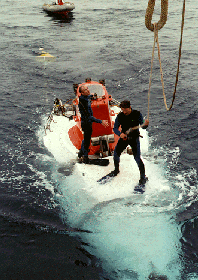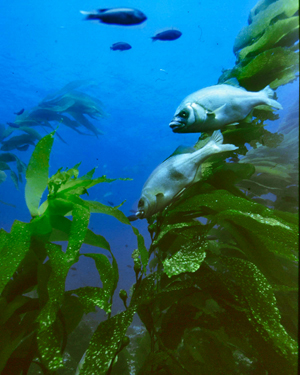A Photo Album from the Alvin Submersible |
|
|---|---|
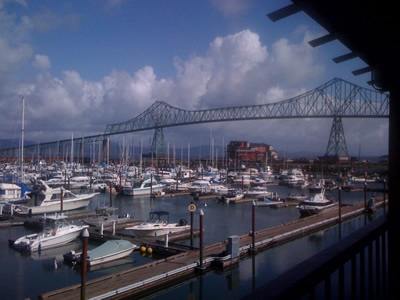 |
The view from Astoria, Oregon before the RV Atlantis, with the Alvin submersible on board, departed on September 7, 2009. Image Courtesy of Tim Killeen |
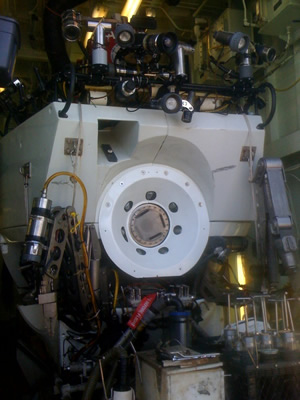 |
Close-up view of the Alvin submersible Image Courtesy of Tim Killeen |
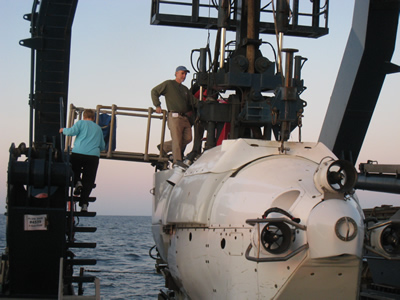 |
Dr. Susan Avery and Dr. Timothy Killeen boarding Alvin on September 8, 2009 Image Courtesy of Tim Killeen
|
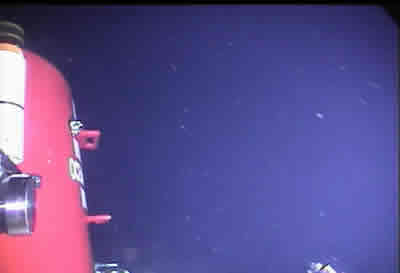 |
Biological creatures in the water column outside Alvin as it descends to the sea floor Image Courtesy of Tim Killeen |
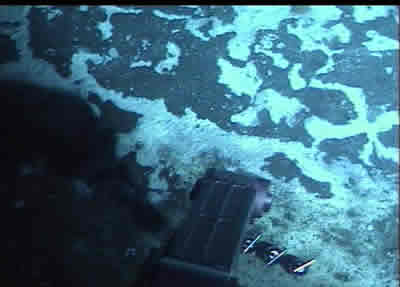 |
These microbial "mats," on the seafloor of the Pacific Ocean, live off of methane gas released from seismic activity in the region
Image Courtesy of Tim Killeen |
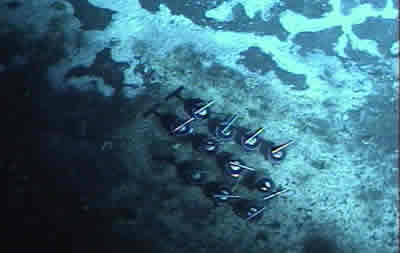 |
Alvin's arm inserted a set of core sampling cylinders into the soft sediments next to the ghostly white microbial mats. Image Courtesy of Tim Killeen |
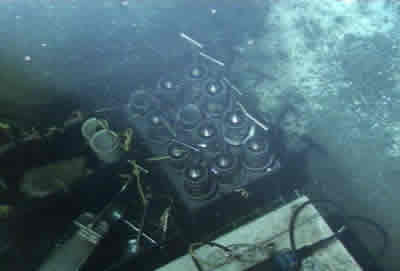 |
These cylinders were used to collect samples from the microbial mats on the sea floor. Image Courtesy of Tim Killeen |
 |
Alvin has a robotic arm that was used to pick up snails from the sea floor Image courtesy of Tim Killeen |
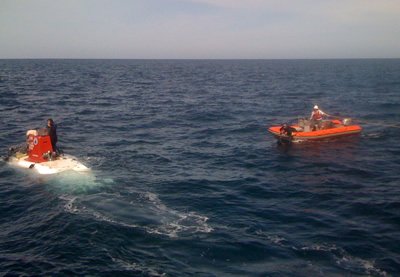 |
Divers prepare to snag Alvin on its return to the ocean surface. Image Courtesy of Tim Killeen |
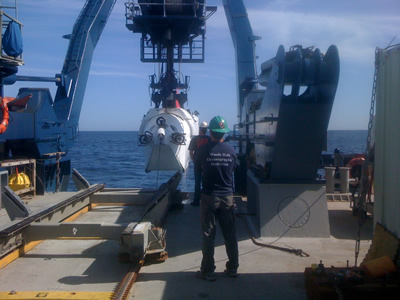 |
Alvin is loaded back on board the RV Atlantis after the dive. Image Courtesy of Carlye Calvin |
 Postcards from the Field: Alvin
Postcards from the Field: Alvin






